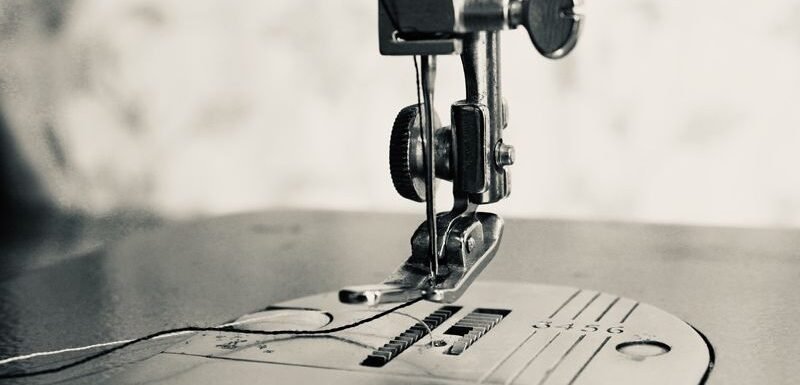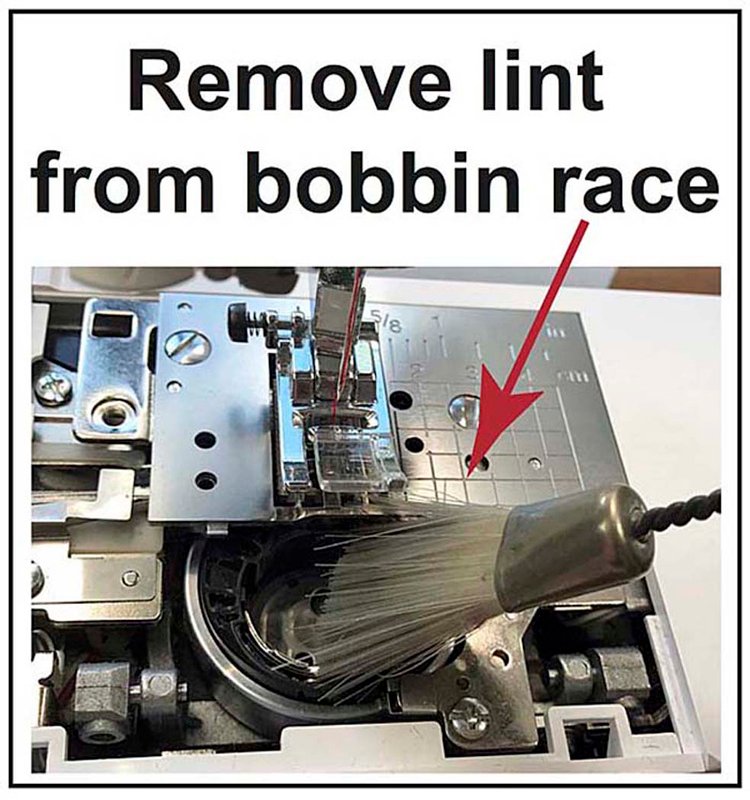Follow this simple guide to discover how to care for your sewing machine — a piece of equipment that represents a significant investment in your creativity, whether you’re a hobbyist or professional stitcher.
Proper sewing machine care takes little time if done regularly.
Here are my simple tips for keeping your sewing machine in top-notch condition and avoiding problems.
How to Care for Your Sewing Machine
Disclosure: Some of the links below are affiliate links, which means I may receive a small commission (at no further expense to you) if you click through and make a purchase. As an Amazon Associate I earn from qualifying purchases from Amazon websites.
Regular Cleaning: The Key to a Long Life
Regular cleaning is a crucial part of maintaining your sewing machine. Ideally, clean your machine after every project or about every 8-10 hours of use.
Over time, lint and dust can build up in various parts of your machine, especially around the bobbin and needle areas. This buildup can result in decreased performance and eventual damage.
To clean your machine:
- Unplug your machine and remove the needle and thread.
- Use a small brush (often provided with your machine) to clean lint and dust from all accessible areas.
- Use a can of compressed air for hard-to-reach areas, but be careful! Make sure you blow dust out of the machine rather than further in. Some experts recommend avoiding canned air due to the risk of blowing lint deeper into the machine or introducing moisture. A small brush is often enough for regular cleaning.
- Never use a vacuum as it can cause static electricity, which is damaging to some machine parts.
Proper Oiling: Ensuring Smooth Operation
Oiling is vital for any mechanical device, including your sewing machine. It reduces friction between moving parts, ensuring smooth operation and preventing unnecessary wear and tear.
While many modern machines don’t need oiling, it doesn’t hurt to check your machine’s manual to see if and where to oil. Specialist sewing machine oil is readily available and inexpensive.

Be aware that many modern and computerised machines do NOT need oiling.
Check your sewing machine manual for guidelines. Also, develop the habit of having your machine professionally serviced each year.
Specialist sewing machine mechanics will clean and lubricate the inner workings of your machine.
When lubricating:
- Use sewing machine oil only. This oil is specifically designed to be safe for your machine, unlike other types, which can be too thick or could potentially cause damage to specific components.
- Apply sparingly so that you never over-oil your machine. A drop or two is often sufficient.
- Avoid plastic parts — oil can degrade some plastics over time.
Wipe Your Machine After Sewing
Cleaning up at the end of the day is not everyone’s favourite pastime.
However, giving your machine a quick wipe down with a DRY, lint-free microfibre cloth or clean, cotton rag will help prevent lingering lint, fluff, and dust from creeping into crevices and the machine’s inner mechanism.
Cover Your Machine When Not in Use
Dust is the enemy of many machines, including your sewing machine.
Cover your machine when you’ve finished sewing for the day to help keep it dust-free.
All modern machines are sold with either a hard or soft cover to protect your investment.
If you don’t have a cover, there is a variety of suitable, inexpensive sewing machine covers available.

Timely Replacement of Needles: An Essential Practice
One often overlooked aspect of caring for your sewing machine is the timely replacement of needles.
A dull, bent, or nicked needle can cause skipped stitches, fabric puckering, and even damage to your machine.
As a general rule, replace the needle after every project or every 8-10 hours of sewing. However, if you hear a “popping” sound as the needle penetrates the fabric, it’s a clear sign you need to change the needle immediately.

Professional Servicing: When to Seek Help
While regular home maintenance goes a long way, you should occasionally take your sewing machine to a professional for servicing.
Sewing machine mechanics can access parts you can’t and fine-tune the machine’s timing, tension, and other critical aspects.
Aim for professional servicing at least once every 1-2 years or whenever you experience consistent performance issues. If you use your machine more heavily, consider professional servicing more frequently.
How to Care for Your Sewing Machine: Wrap-up
Knowing how to care for your sewing machine can significantly enhance its performance and lifespan.
Through regular cleaning, proper lubrication (where necessary), timely needle replacement, and periodic professional servicing, your machine will serve you well for years to come.
Remember, every machine is different.
Older machines often require different care from contemporary, computerized machines. Always refer to your machine’s manual for specific care instructions.
Whether your machine is entry-level or top-of-the-range, it’s a precious part of your creative life, so it’s worth taking the time to care for it with the attention it deserves.


